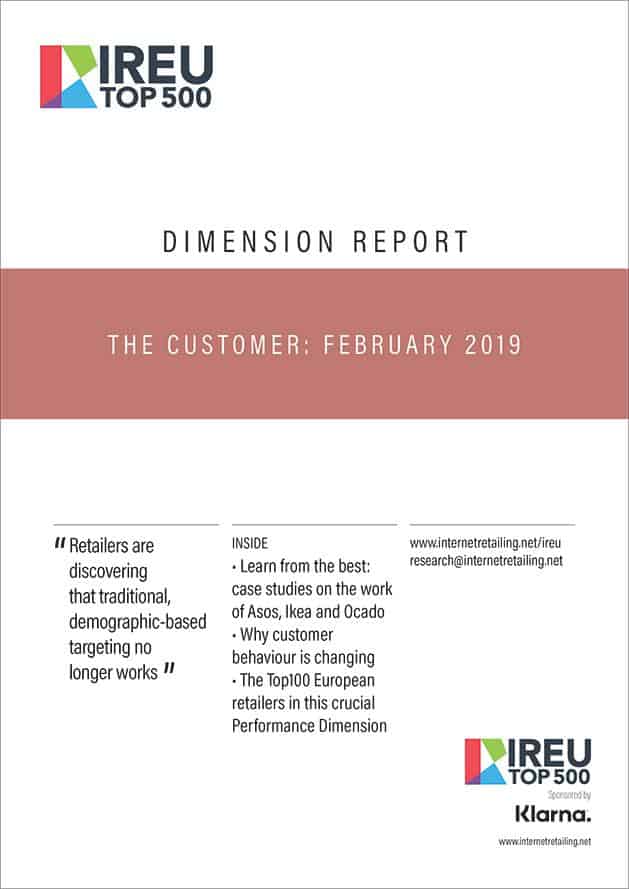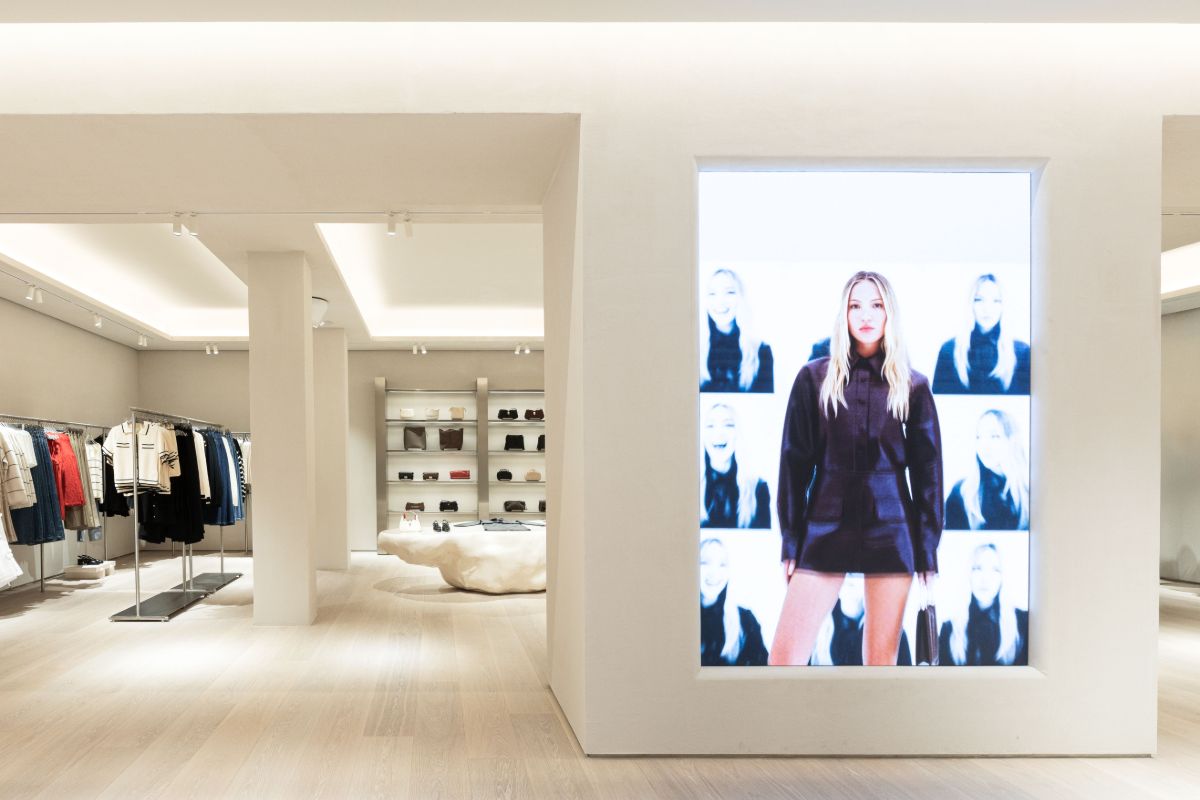The latest InternetRetailing EU Dimension Report focuses on The Customer. Emma Herrod reports on some of the research findings.
The latest of InternetRetailing’s IREU Dimension Reports focuses on The Customer, which is of course where the focus of retail should always be. By this, the researchers mean that retailers – and increasingly brands selling direct too – operating at the cutting edge are increasingly building their offerings around customers, personalising offerings.
In one sense, this is simply a continuation of something shopkeepers have always done, staying close to customers and understanding their needs. The difference now is that retailers that operate across channels and across territories, and which have different brands sharing much of the same infrastructure, have to stay close to customers at scale and in an increasingly competitive environment.
This is not going to change. Rather, as the report discusses, reaching different demographics is only likely to become more complex in the near future – so much so that the assumptions underpinning traditional targeting techniques can no longer be relied upon.
So what should retailers do to prepare? The case studies on Ocado, Asos and Ikea offer clues.
Online supermarket Ocado, for example, has put customer care at the heart of its strategy and, in the past year, has pressed ahead on several fronts. One project has seen it introduce the Orlo technology platform – also used by Iceland and Laura Ashley, among others – which integrates social media and live chat management so that the online grocer can move easily between communication channels when talking to customers, while at the same time, allowing Ocado to retain linked records of all conversations. Ocado’s stated objective is to provide its customers with improved customer care as one more way of delivering a better overall shopping experience.
Fashion retailer Asos is taking a multifaceted approach to supporting its customers and, says the report authors, “The volume of work Asos undertakes to support the customer journey is striking. It updated its technology through 2,900 releases in its last financial year, including many new customer features and shopping experience changes.”
It recently launched Fit Assistant, an AI assistant built into the Asos app that helps consumers find their fashion fit before they order. Fit Assistant uses machine learning to offer consumers personalised size recommendations for particular products, based on their pattern of previous purchases as well as returns.
Ikea, the Sweden-headquartered home retailer, meanwhile, has created loyal customers the world over primarily through its distinctive store offer and well-designed products. On the face of it, the company plans to stick to its proven formula in the years ahead, although with a few twists. It recently announced plans to invest billions of Euros in growing its store count to 70 over the next seven years, while also working hard at its developing omnichannel offer.
This IREU Report lists the leading retailers by their performance in this Dimension.
The report concludes that we are living through an era where pricing is, if not quite transparent, at least far less opaque than it would often have seemed to previous generations. With access to a smartphone, customers on the move can instantly check prices on the items they want to buy. Yet despite this, customers do not buy on price alone. Issues around trust, in particular, always have an effect on purchase decisions. Customers want to buy from retailers and brands that are reliable, efficient and that keep their promises.
This is why issues around customer experience again and again turn out to revolve around a rather dull yet important word – consistency. When customers order from a retailer, they should move from an intuitive website or app through an easy-to-follow checkout process, and be able to choose from delivery and collection options that are appropriate to what they’ve bought. If these customers have to send an email or talk with a customer service advisor, they should get straightforward, polite and prompt answers. When they range across different channels, as customers do, they should not receive any information that does not tally with what they have been told elsewhere.
This all sounds simple, but as this Dimension Report shows, just the sheer number of variables here mean that ensuring dull consistency is tough. Moreover, it is work that never ends, which constantly needs revisiting as, for example, demographics change and customer expectations similarly change. To stay ahead of competitors, retailers need to recognise this truth and deal with it – consistently.





